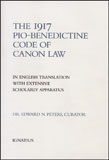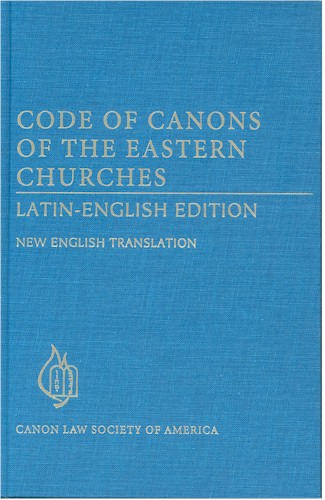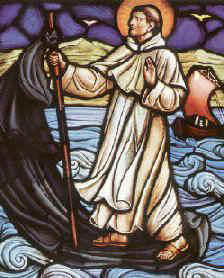|
To work for the proper implementation of canon law is to play an extraordinarily constructive role in continuing the redemptive mission of Christ. Pope John Paul II |
|
|
|
|
Resolution 1152 x 864 |
Updated 20 nov 2015 |
Review of Gabriel Amorth, An Exorcist Tells His Story (Ignatius, 1999) 205 pp. |
|
Edward Peters, Review of G. Amorth, An Exorcist Tells his Story (1999), This Rock (Jan 2000) 40.
Père de Tonquédec, an expert of the front rank in these matters, himself assures us that in the course of twenty years he has never come across a case of pure possession. Charles Moeller, Satan (1953), xviii.
+
Of related interest:
My review of T. Allen, Possessed: The True
+
For a kinder, gentler review of Gabriel Amorth's book, see Fr. Brian Van Hove's remarks, appearing variously, but finally, here.
|
We need a good book on extraordinary demonic
activity, since there has been so much of it lately, and we need a good book on
exorcism, now that the new rite of exorcism has finally been released, thus
completing the post-conciliar project to reform all of the rites. But despite
some strengths, Fr. Gabriel Amorth’s An
Exorcist Tells His Story is not that book. At the very least, it
demonstrates that not every practitioner in a field is an effective
apologist for that field.
Amorth is the Chief Exorcist for the
Diocese of Rome. He worked for several years under the tutelage of Fr. Candido
Amantini (d. 1992), a priest with 30 years of exorcism experience. Hence, one
approaches Amorth’s book, which has already gone through several printings in
its Italian original, with high expectations. Amorth makes, however, the
astounding claim to have personally performed 30,000* exorcisms over nine years
(p. 169), a claim that surpasses the credulity of even the most
favorably-disposed reader. This particular claim appears late in
the book, but a careful reader will encounter many other problems throughout the
work.
I begin by noting that Fr. Benedict Groeschel wrote one of the most tepid forewords to a book I have ever seen.
“At first I declined,” he noted, and then he continued, “I have
difficulties with Fr. Amorth’s approach. He writes of this intriguing subject
in ways quite foreign to the ideas of the English-speaking world…he uses
rhetoric foreign to most of us and even theological concepts alien to our way of
thinking…” Groeschel’s concerns are justified, and the cultural oddities
are many. See, for example, Amorth’s comments on gypsies, mentioned only
because “they are everywhere in Europe”, and whom he lumps together with
“card readers and scoundrels” (p. 161), or his brief but confused discussion
of the stereotypically Italian “evil eye” (p. 132). But bothersome as such
details are, the problems with this book are deeper.
Amorth’s book will not fare well under
scholarly, or even under commonly thoughtful, analysis. There are, for starters,
no footnotes, no bibliography, and no index. Save, then, for a very small number of
in-text references, there is no way to check most of Amorth’s multitudinous
assertions, even many that he claims are "well-documented". And as for the
personal, real-life life episodes described by Amorth, supposedly a chief
contribution of this work, they are, at least insofar as what is actually
presented, frequently unconvincing. Consider one of three examples of a
“curse” narrated by Amorth (pp. 130-131): A father cursed his son at birth
and continued to curse him as long as the son lived at home. The son, says
Amorth, “suffered from every conceivable misfortune” including—the
exorcist’s hyperbole nothwithstanding—poor health, unemployment, marriage
difficulties, and health problems with his own children. But how does any of
this prove the existence of a “curse”? These sad facts seem readily
explainable as the common manifestations of an emotionally battered child reared
by an utterly dysfunctional father. With dads like that, who needs devils?
Serious inconsistencies are common in Amorth’s
work. For example, he correctly notes that canon law requires priests to obtain
specific and express permission to perform an exorcism and that such a solemn
rite should be applied only after diligent examination (see Canon 1172). Yet
Amorth describes case after case of people who seem to appear on his doorstep,
only to have him immediately set about performing an exorcism (pp. 70, 77, 88,
158-159). Even accepting Amorth’s claim that only 94 of his 30,000 exorcisms
represented full-blown possession (the primary scenario for which exorcism is
supposed to be canonically authorized), even that would have required roughly one case a month to be thoroughly
examined and processed over nine years with hardly a break. Amorth adds, by the
way, that he has all the names of victims written down (p. 169). Why? With what
precautions?
Amorth is critical of physicians who
treat patients for years with little or no results (pp. 62, 70), and yet he does
not blush at recording his own weekly
exorcisms of some people that run on for years,
often enough with mixed results of his own (pp. 49, 73, 139, 169). Elsewhere he
states, regarding evidence for hexes, that “if I were to tell of the bizarre,
unbelievable facts that I have witnessed, I could go on forever”, this,
despite the fact that “hexes are always rare.” (pp. 134-135) Amorth’s does
not explain exactly how such a rare occurrence leaves him with an inexhaustible
supply of evidence.
Amorth correctly outlines the eventual
triumph of Christ over Satan that is manifested in exorcism cases (pp. 19-23,
56, 96), but then tells, for example, about a house that was so infested that
“I was forced to recommend simply leaving the place” (p. 125). What are we
to make of this? That some places are off limits to God? Amorth rightly notes
that idle questions are not to be posed to the devil during exorcisms (p. 79),
yet cites at least three examples of just these kinds of questions being posed
by his mentor during the rites (pp. 75, 76). He dismisses as a “false
belief” the idea that the devil will expose the sins of the others during the
expulsion ceremonies, and immediately provides two examples of the devil doing
precisely that (pp. 94-95). Or again, Fr. Candido supposedly learned a valuable
lesson when he botched an exorcism and was in bed for three months with stomach
ailments that lingered for ten more years (p. 139), and yet Amorth says later
that Candido, in course of his long career, “suffered some physical illness
due partly to age, but not to the devil” (p. 194). Clearly, we are faced here
with an either-or here: Either Candido suffered physically as a result of his
battles with the demonic, or he didn’t. The answer to this question should not
depend upon what point Amorth is trying to make at the time.
Certain of Amorth’s assertions are jarring. For example, he
describes the bizarre objects that the unfortunate people he works with have
ingested, and states that this practice might be a sign of demonic activity (pp.
118-119). Indeed, it might be. But it might also be a sign of pica,
schizophrenia, or Kleine-Levin syndrome, none of which
Amorth even alludes to. And as for his mentor’s retrieving these objects from
vomitus and mucus, and then keeping them around in a basket, well, at the very
least, the reader should have been forewarned about that coming description and
given some explanation about the need to retain such objects instead of
destroying them as soon as possible, as Amorth himself recommends elsewhere (p.
139).
Finally, a few of Amorth’s assertions
are simply silly. For example, after mentioning the use of cats in certain types of
witchcraft, Amorth feels the need to add “I want to make it clear that it is
not the fault of this charming household pet.” (p. 127). Or again, he advises
that regurgitated or “materialized” objects be thrown into a river or the
sewer, but never “into the toilet or sink; when this happens, often the entire
house is flooded or every drain becomes plugged.” (p. 138). I can imagine.
I need no convincing that extraordinary demonic activity has
increased greatly during the 20th century, especially over the last few decades.
I know first-hand how difficult it is to get some ecclesiastical officials to
take such phenomena seriously. I have assisted some bishops in
making the initial preparations for such a controversial ministry, and I have
tried to equip a few open-minded priests with the background reading that such work
will require. But I understand why it is that bishops and priests tend to regard
this work with suspicion and trepidation. Pervasive personal sin and serious
psychological disturbances do account
for much of the sorry state of affairs around us. There is no point in
suspecting demonic intervention when, for example, one’s delivery truck breaks
down, or if a warehouse is unexpectedly locked-up at drop-off time, or if an engagement is
called-off (pp. 87, 82, 81). Indeed, proclivity toward such suspicion is itself
harmful. * The number claimed rose to 50,000 by 2001. |
|
A note on Amorth's second book |
I have not yet decided whether I will formally review Amorth's second work, An Exorcist: more stories (2000). But this much I will say: it is as bad as his first. The kindest thing one might suggest is: whatever Amorth's skills as an exorcist might be, he shows virtually none as a writer, evidencing little systematic understanding of, let alone ability to relate, the kind of information that one has a right to expect in this delicate area. He commits about every kind of logical, pastoral, and journalistic error, short of heterodoxy, that one could make in writing about this topic. In short, read Amorth's works, if at all, only after acquiring from other sources a solid orientation in topics related to extraordinary demonic activity and the Church's power over it.
|
|
More regrettable lines |
In an August 2006 radio interview, Fr. Amorth announced his conclusion that Hitler and Stalin were possessed; in fact, said Amorth, all Nazi's were possessed, after all, just look at all the evil things they did. Oh really? What about all Communists? Or what about, say, just Mao Tse-tung, or Pol Pot? Golly, what about Genghis Khan? At what point does one's evil behavior become synonymous with possession? I don't doubt but that Satan had a field day with Nazis and Communists—and the influence of the occult on Nazis especially, is well documented—but Fr. Amorth's latest sweeping, quite debatable, and generally confusion-sparking conclusions are just more evidence that, whatever skills he might have as an exorcist, he is not a reliable spokesman on possession and exorcism.
|





